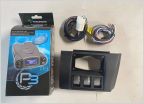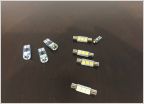-
Welcome to Tundras.com!
You are currently viewing as a guest! To get full-access, you need to register for a FREE account.
As a registered member, you’ll be able to:- Participate in all Tundra discussion topics
- Transfer over your build thread from a different forum to this one
- Communicate privately with other Tundra owners from around the world
- Post your own photos in our Members Gallery
- Access all special features of the site
FS: Wireless charger for center console $60 SOLD
Discussion in '2.5 Gen Tundra Parts Marketplace (2014-2021)' started by Vendeta2k, Jan 8, 2020.
- Thread Status:
- Not open for further replies.
- Thread Status:
- Not open for further replies.


 SOLD: Tekonsha P3 Brake Controller w/Dash Kit-NIB, So Cal
SOLD: Tekonsha P3 Brake Controller w/Dash Kit-NIB, So Cal FS: ARB On-Board Single 12v Air Compressor w/Bannock Mount (sale pending)
FS: ARB On-Board Single 12v Air Compressor w/Bannock Mount (sale pending) SOLD
SOLD Free led bulbs
Free led bulbs FS: BOSS Coilover Shim
FS: BOSS Coilover Shim















































































